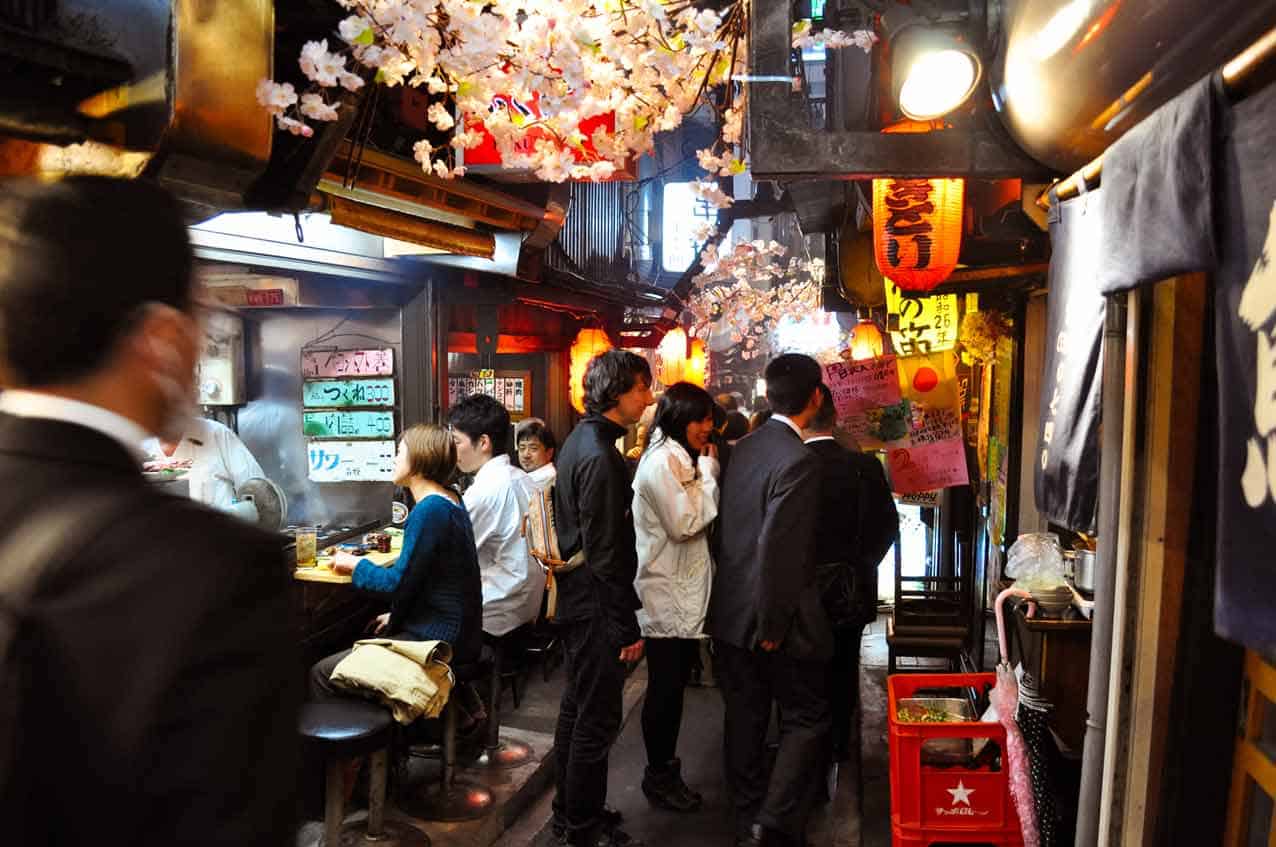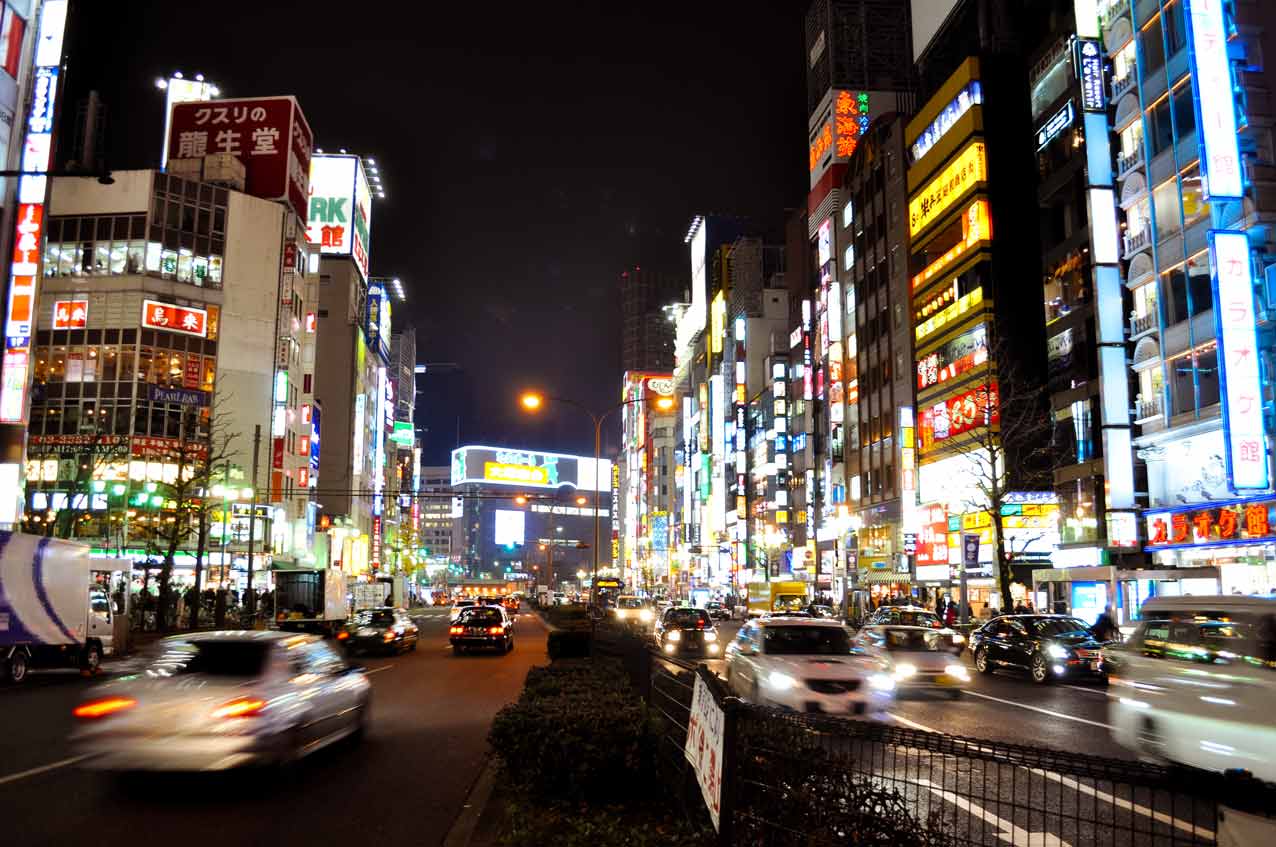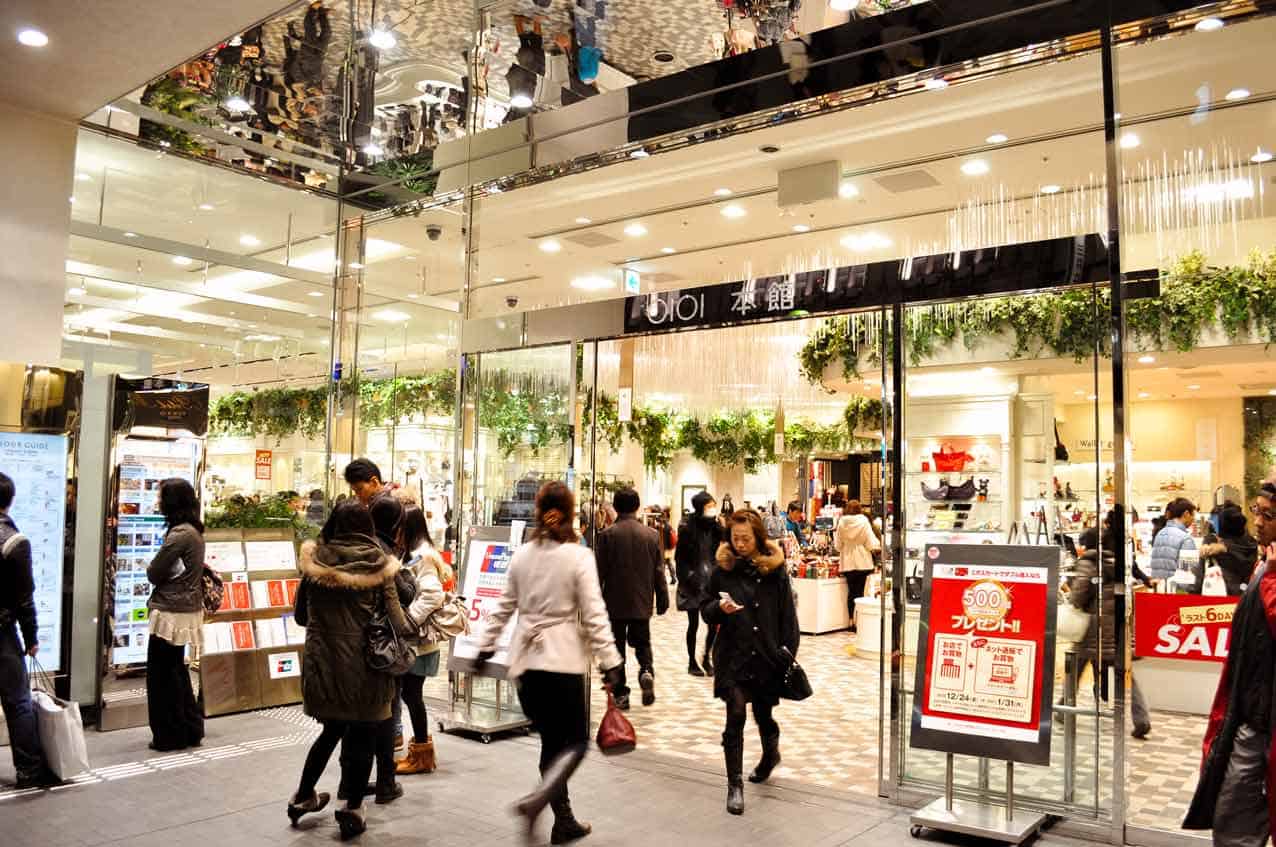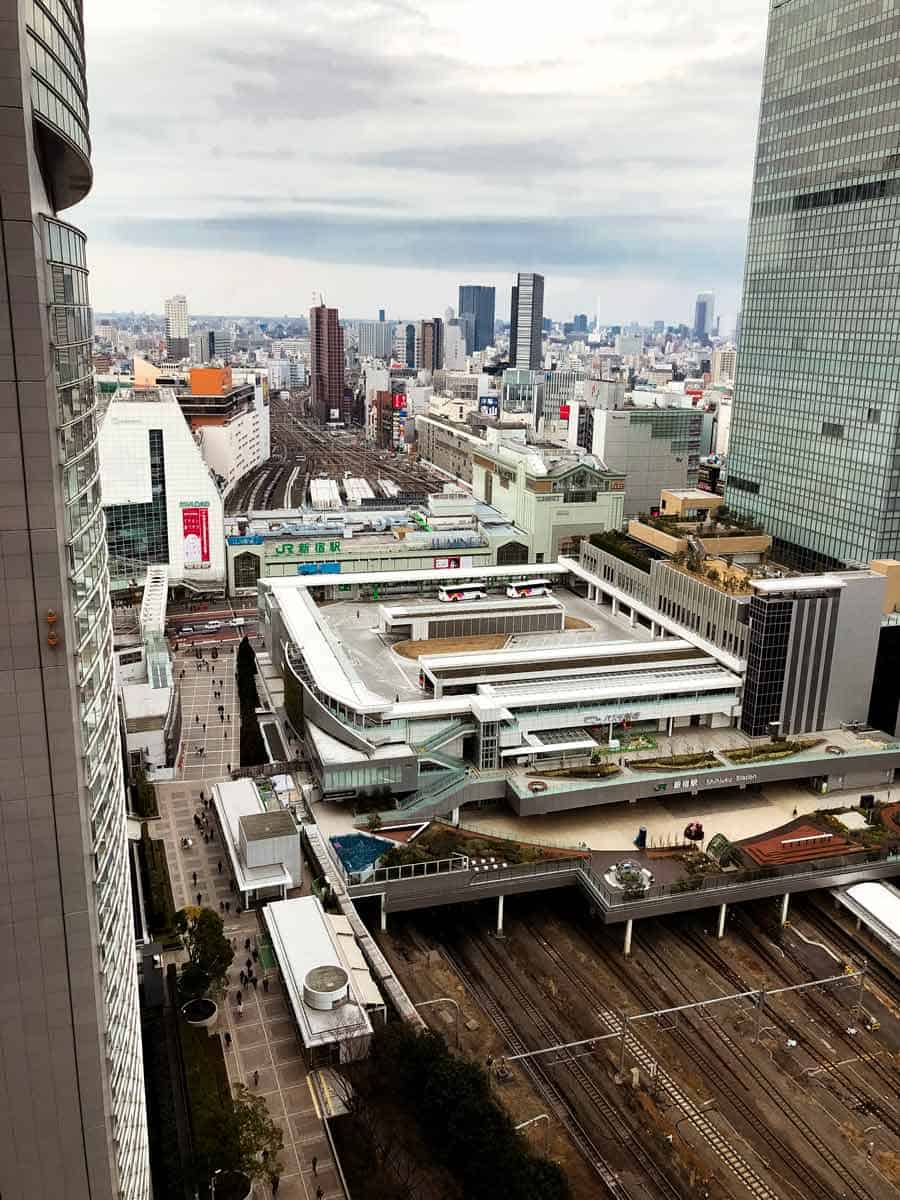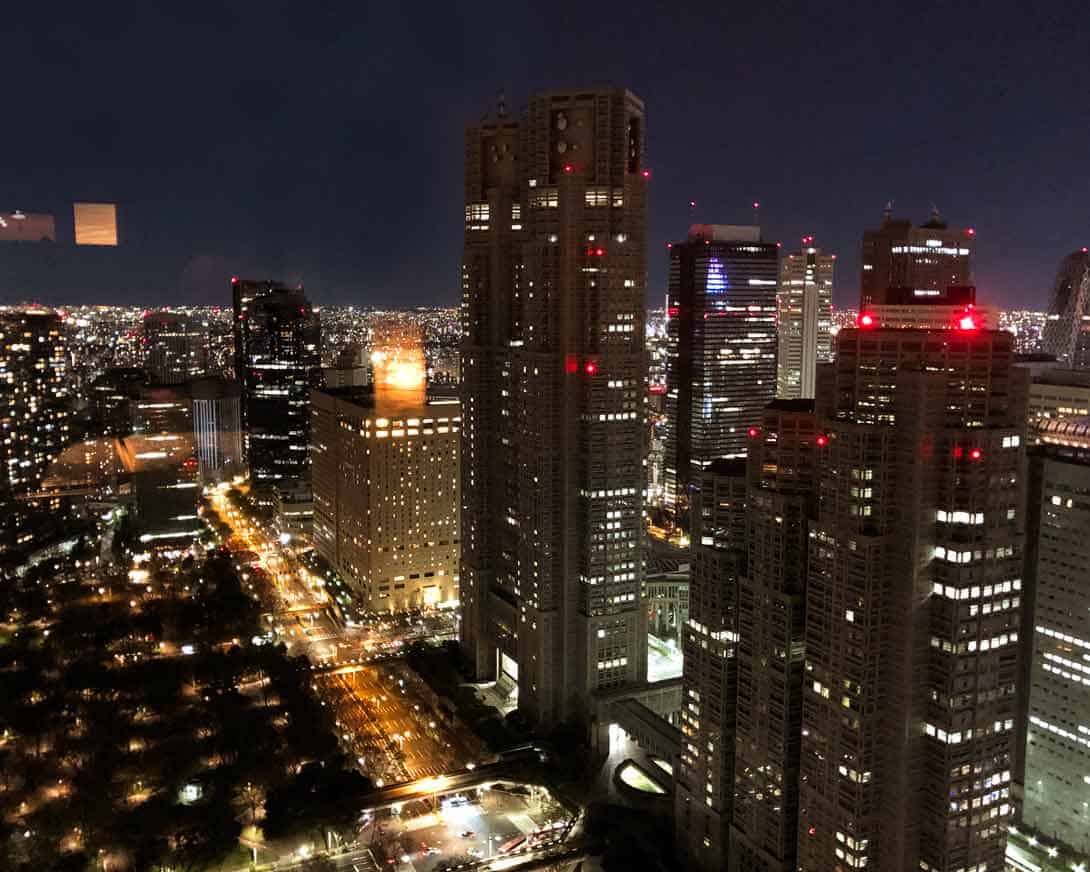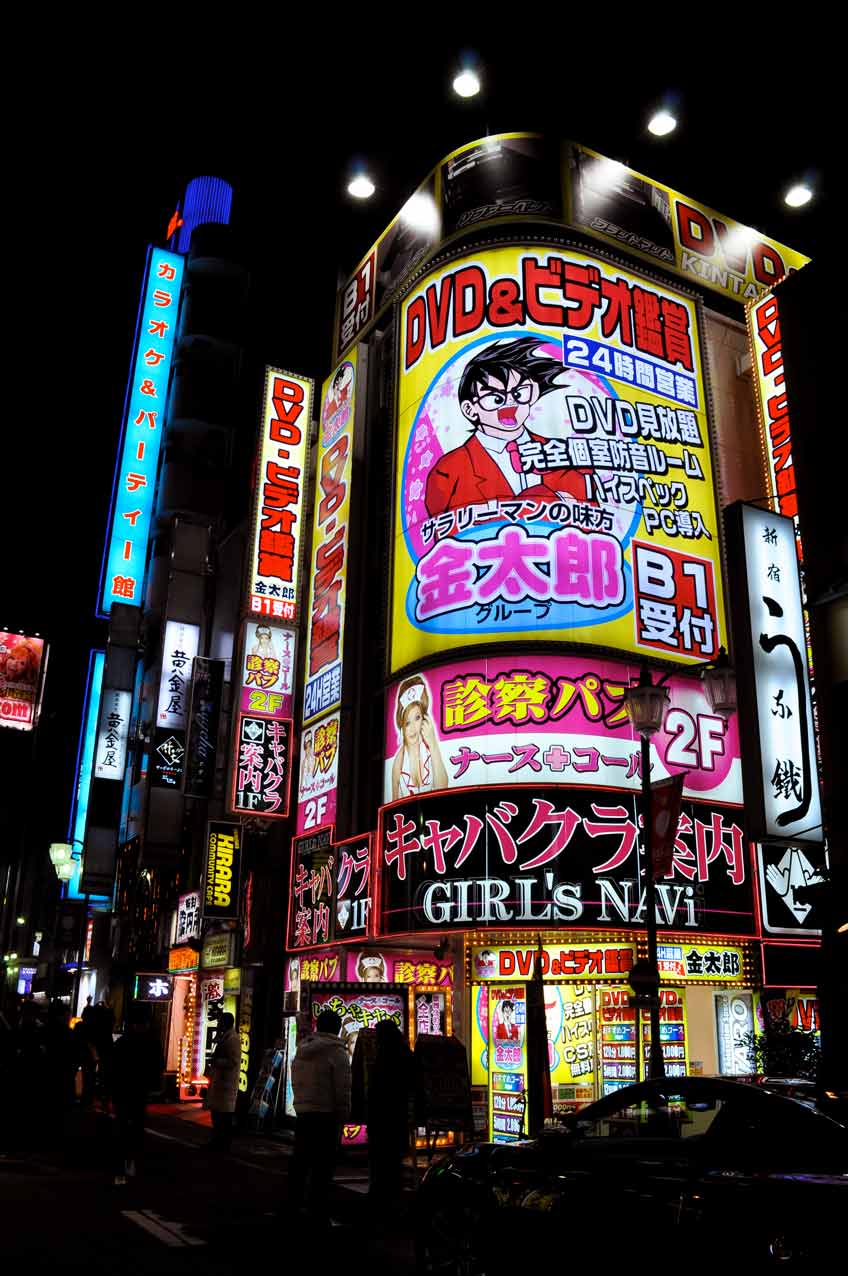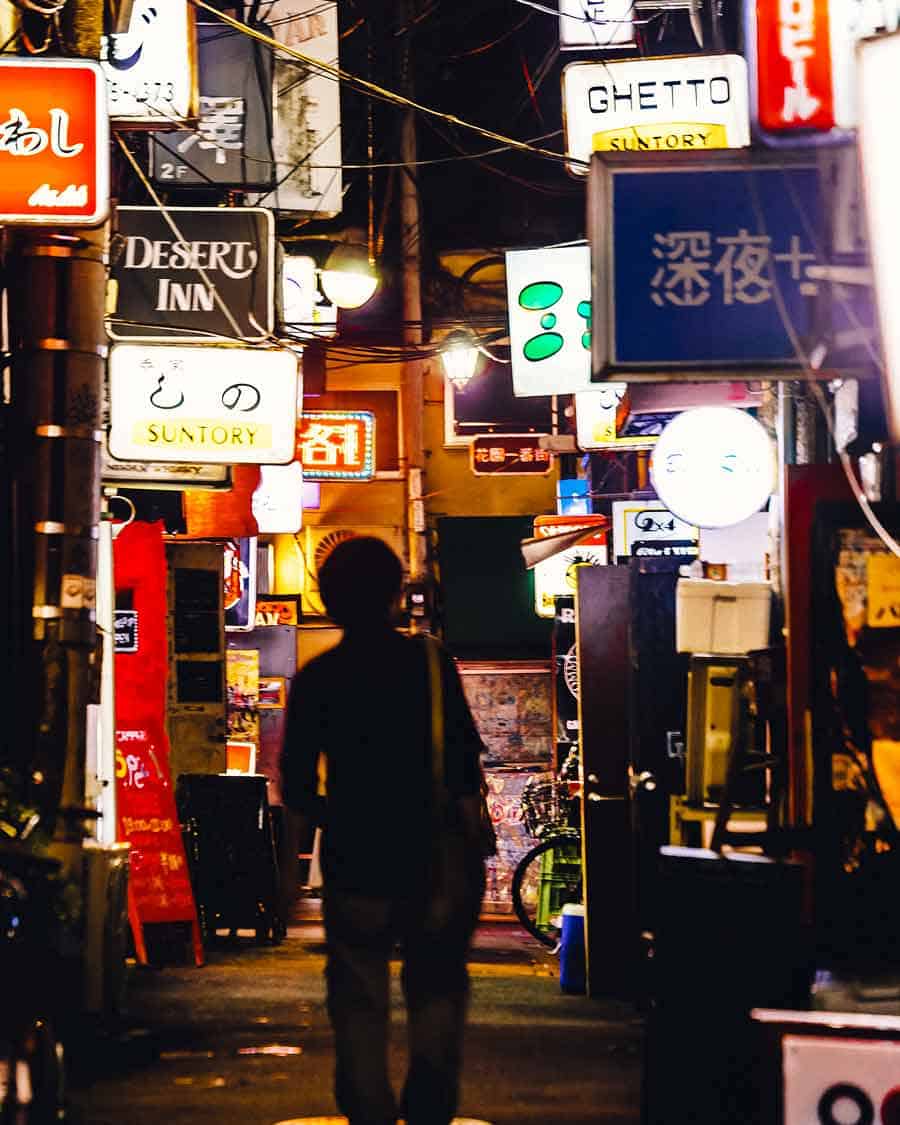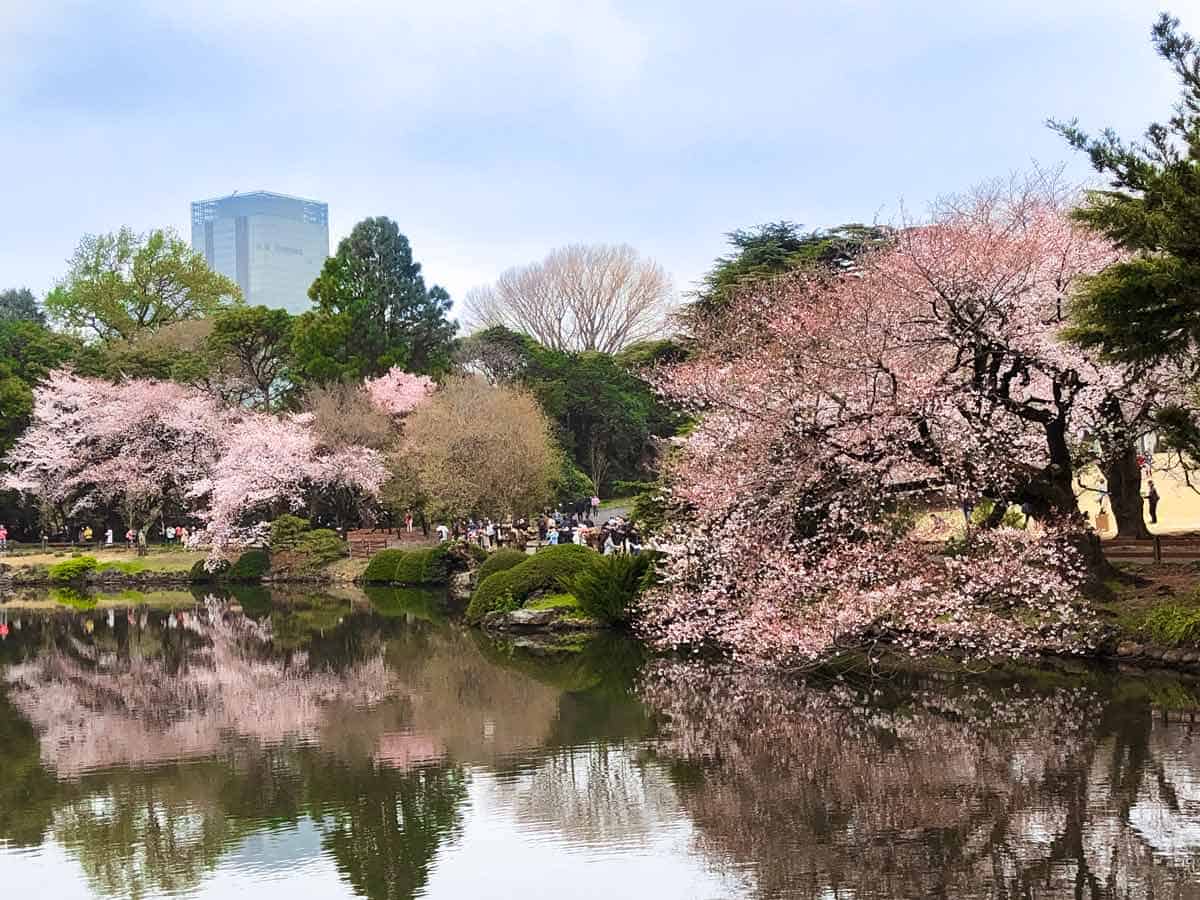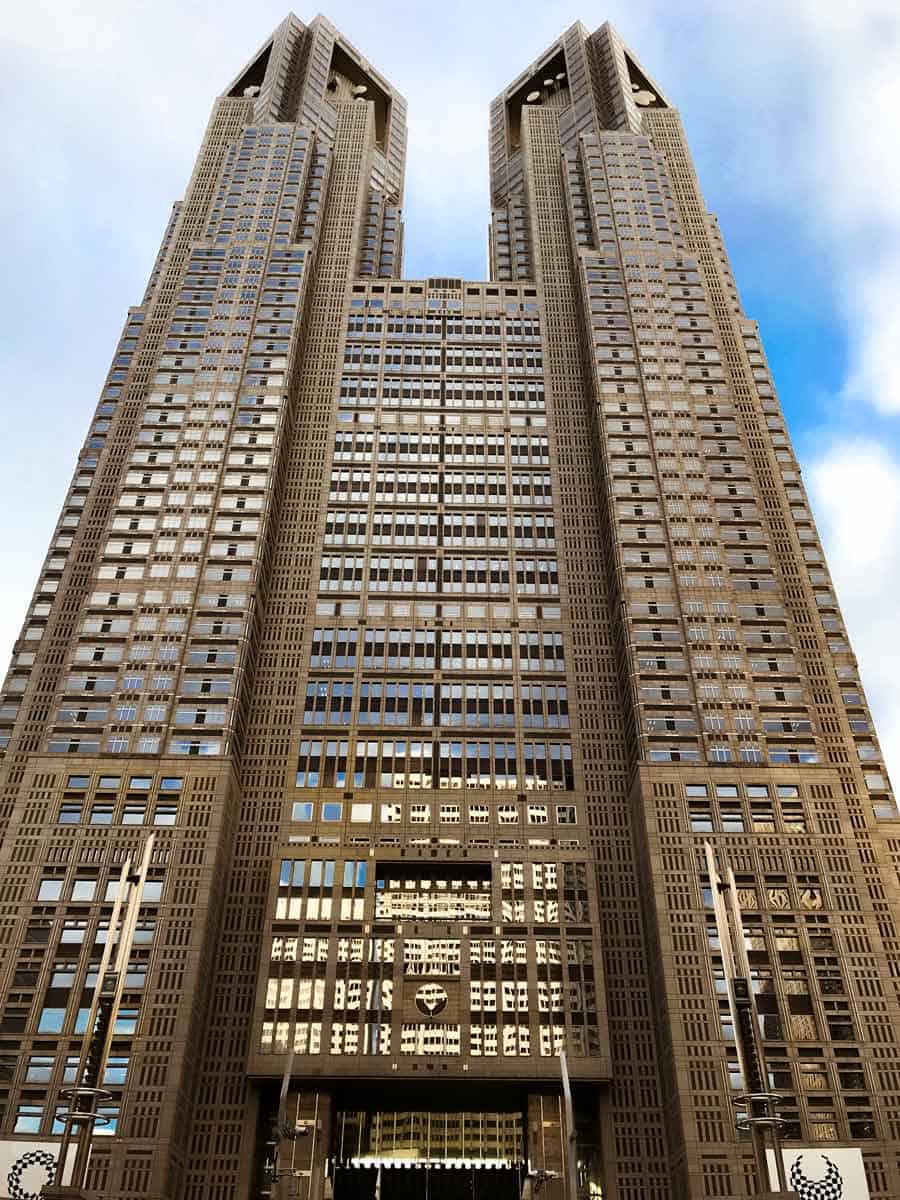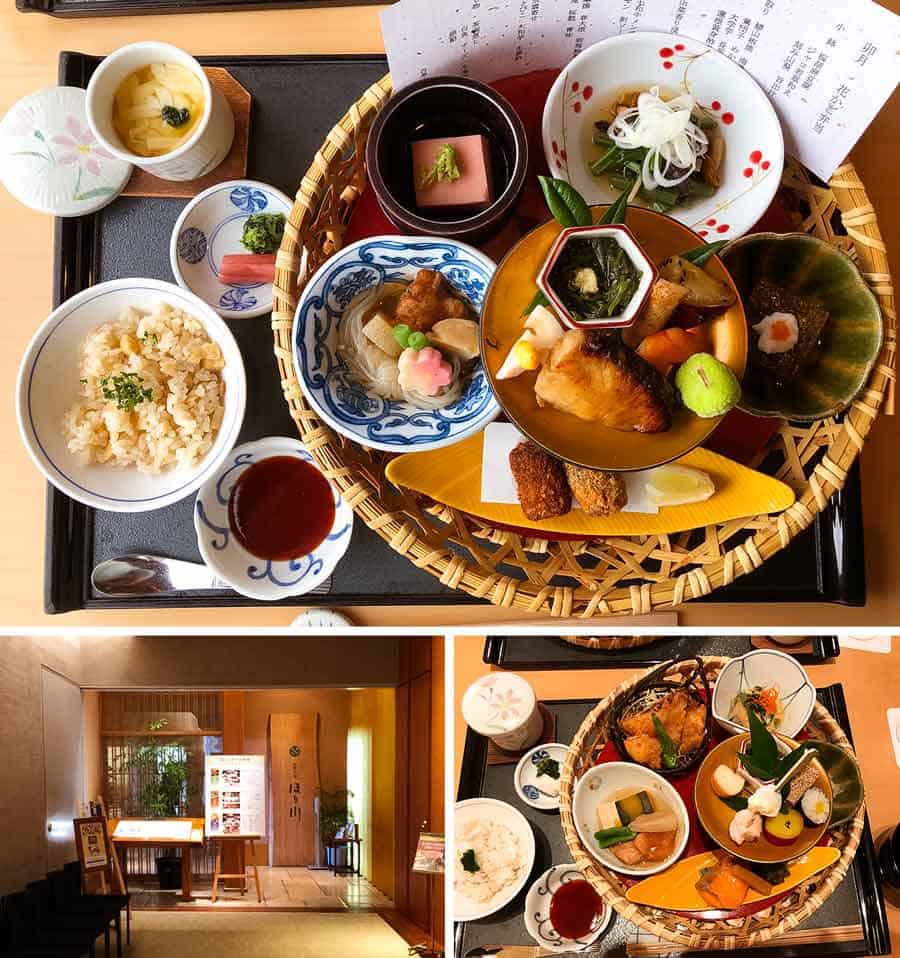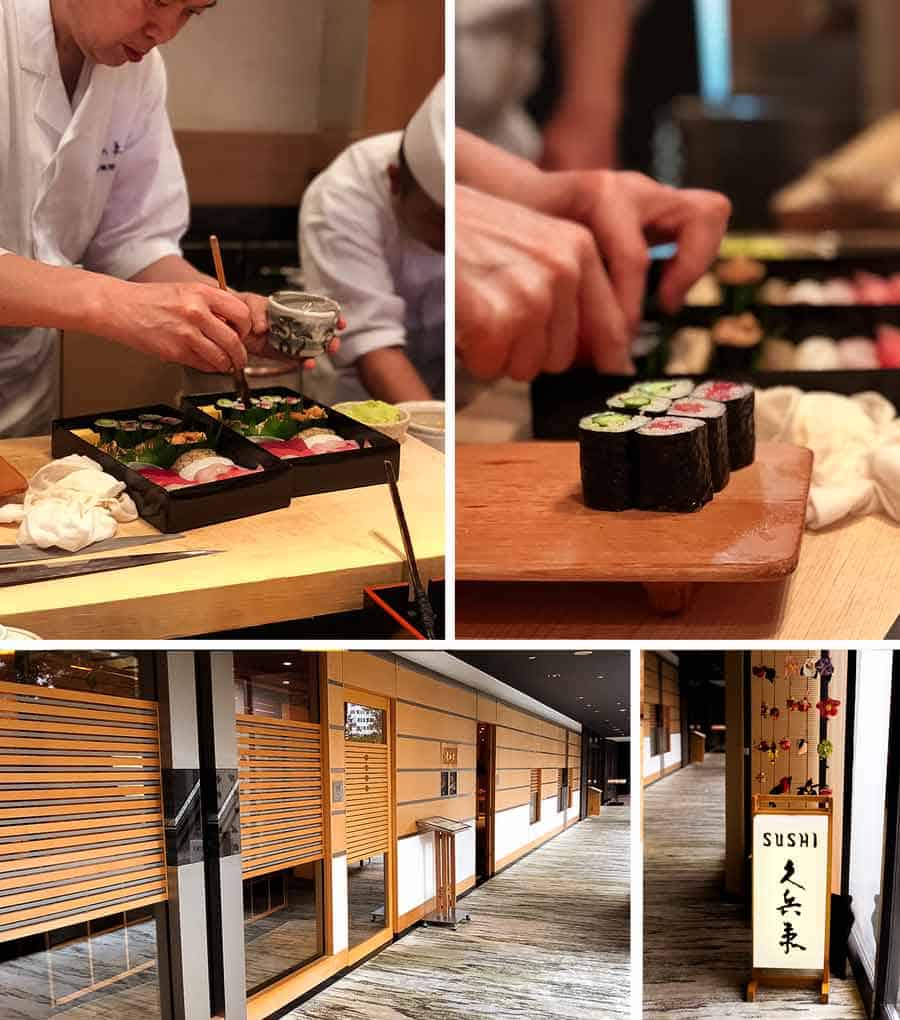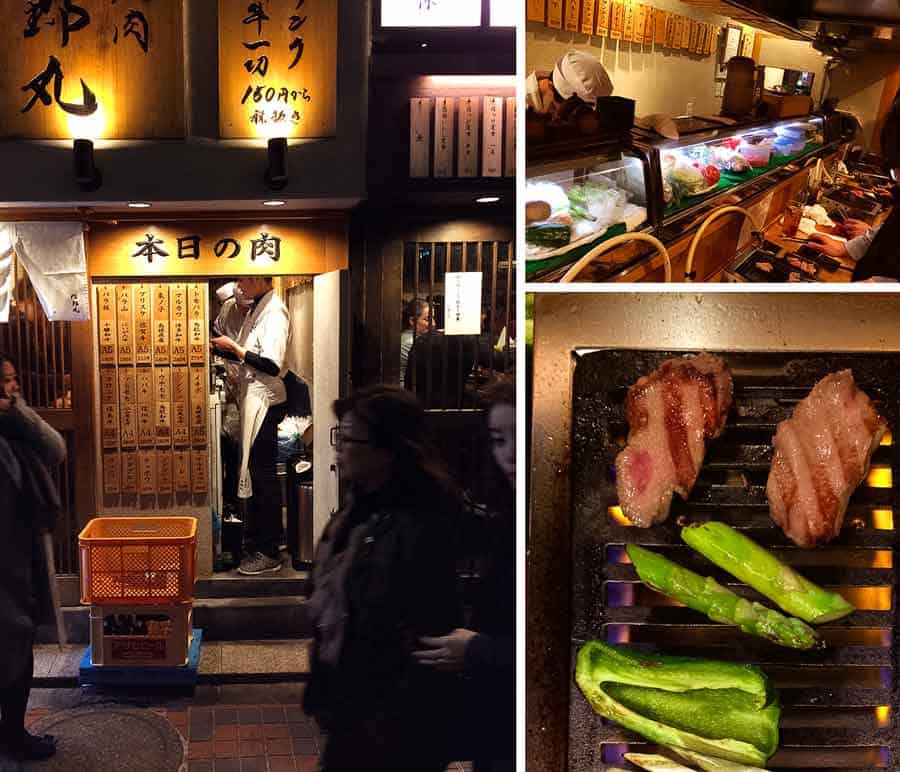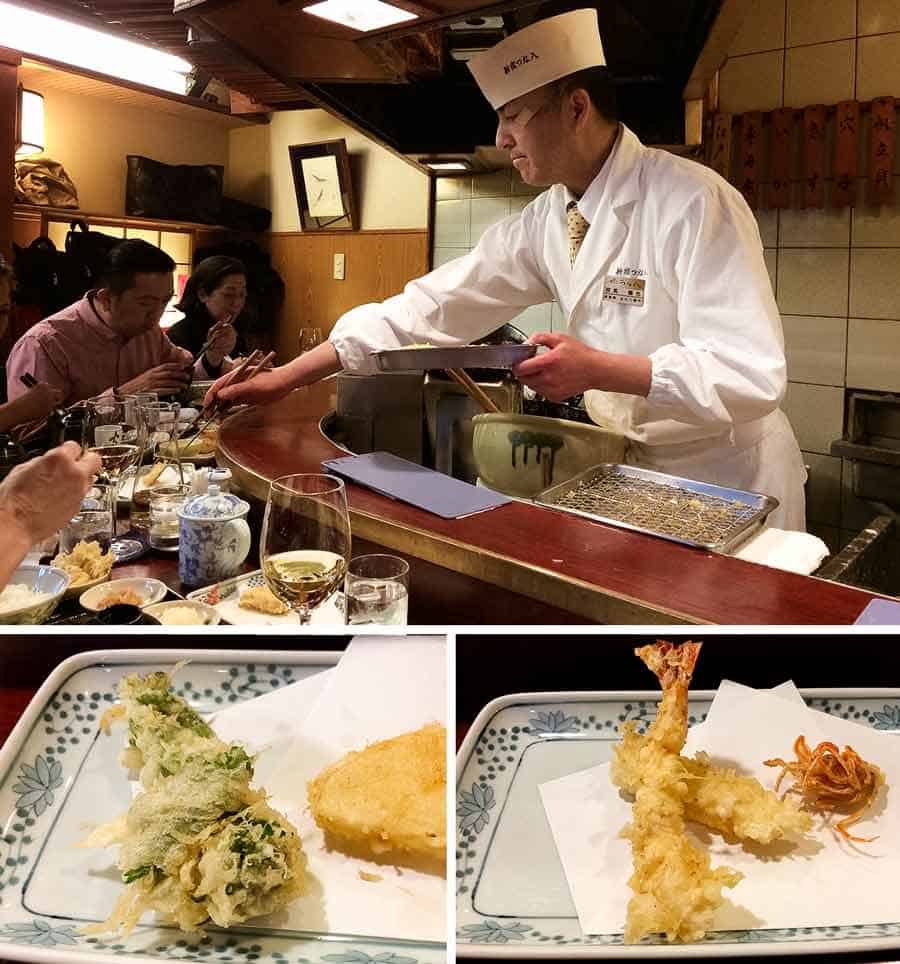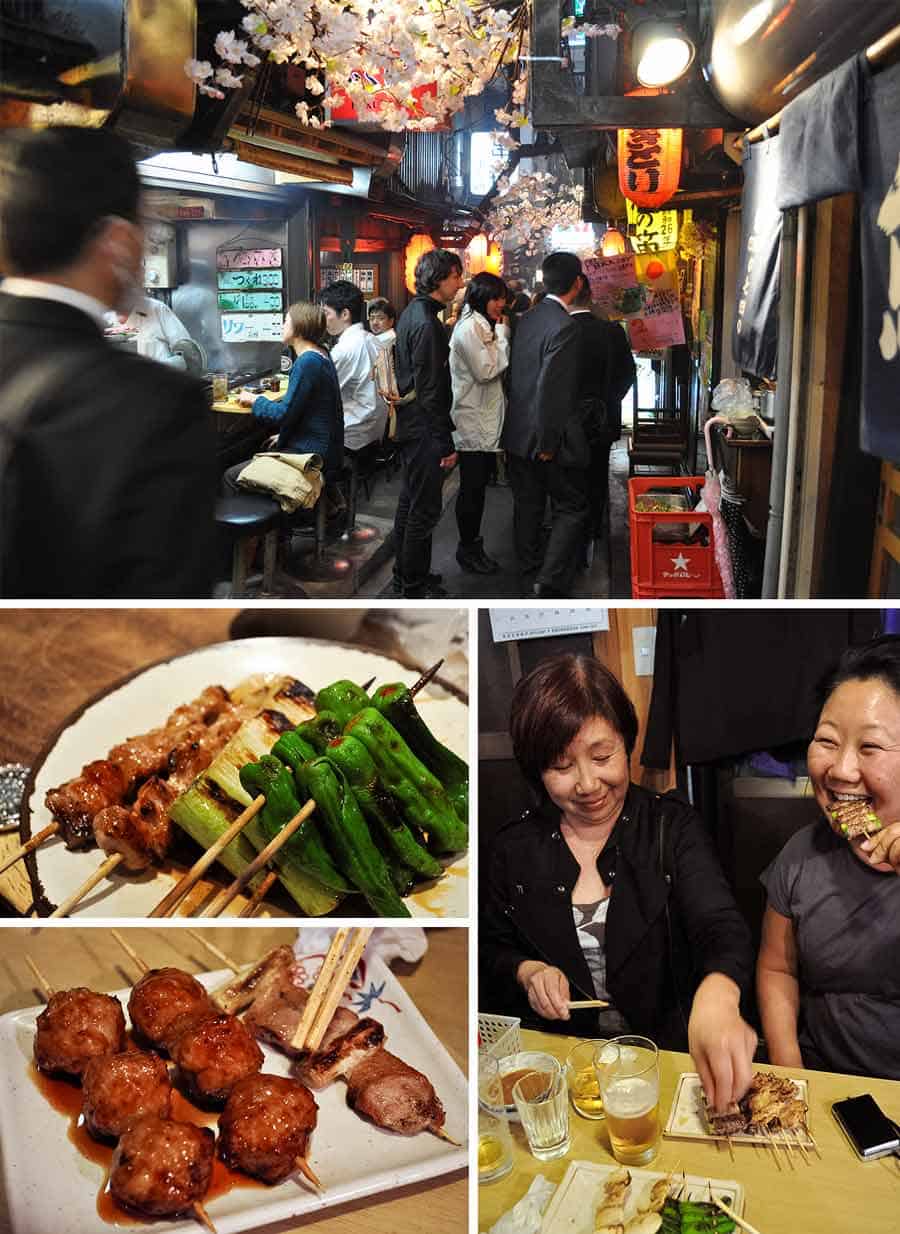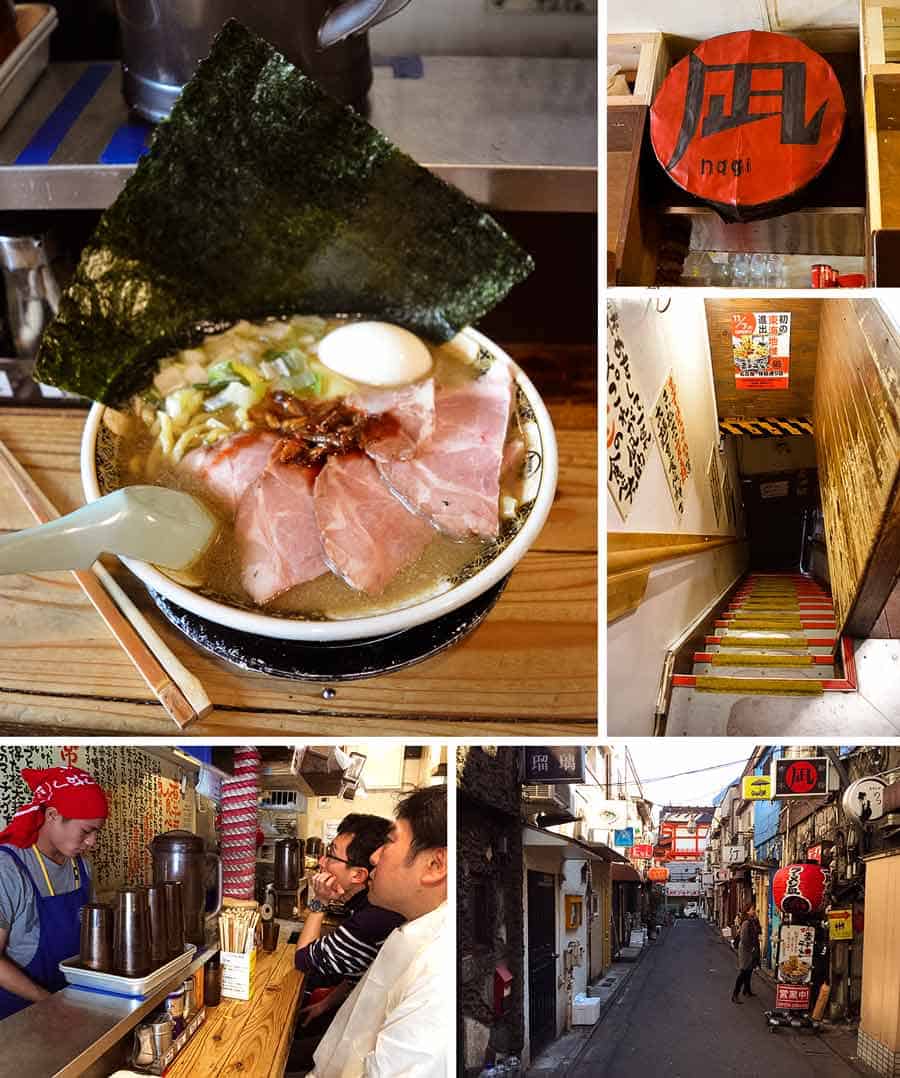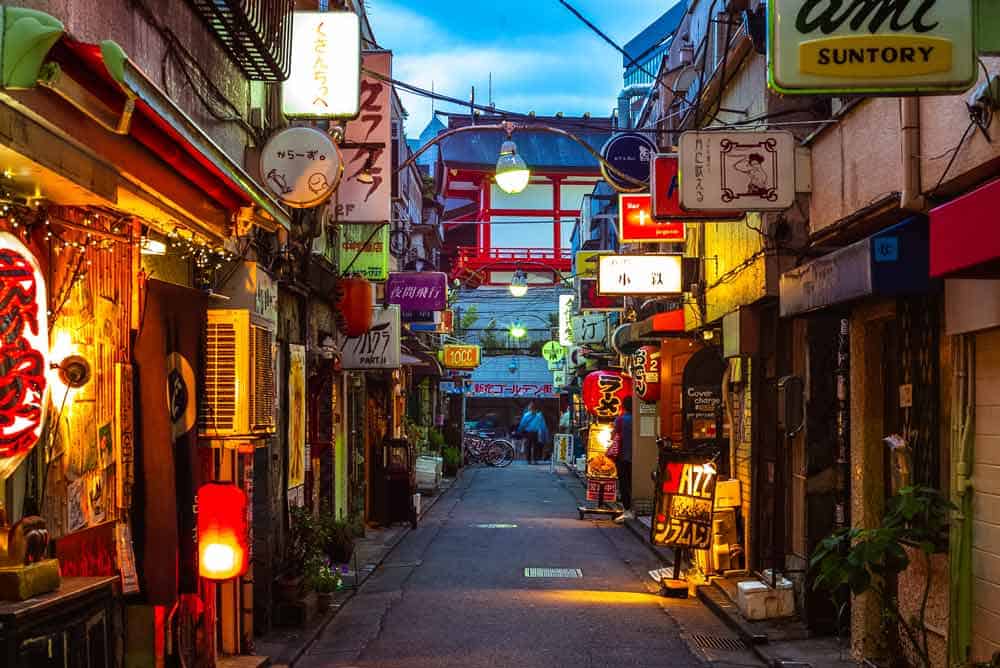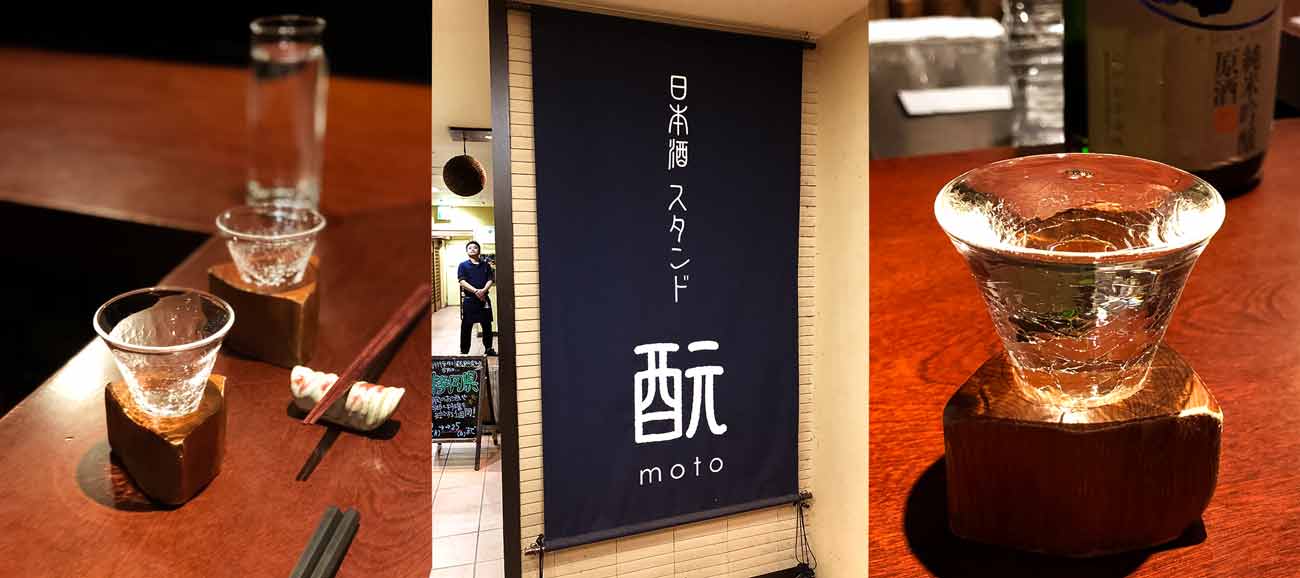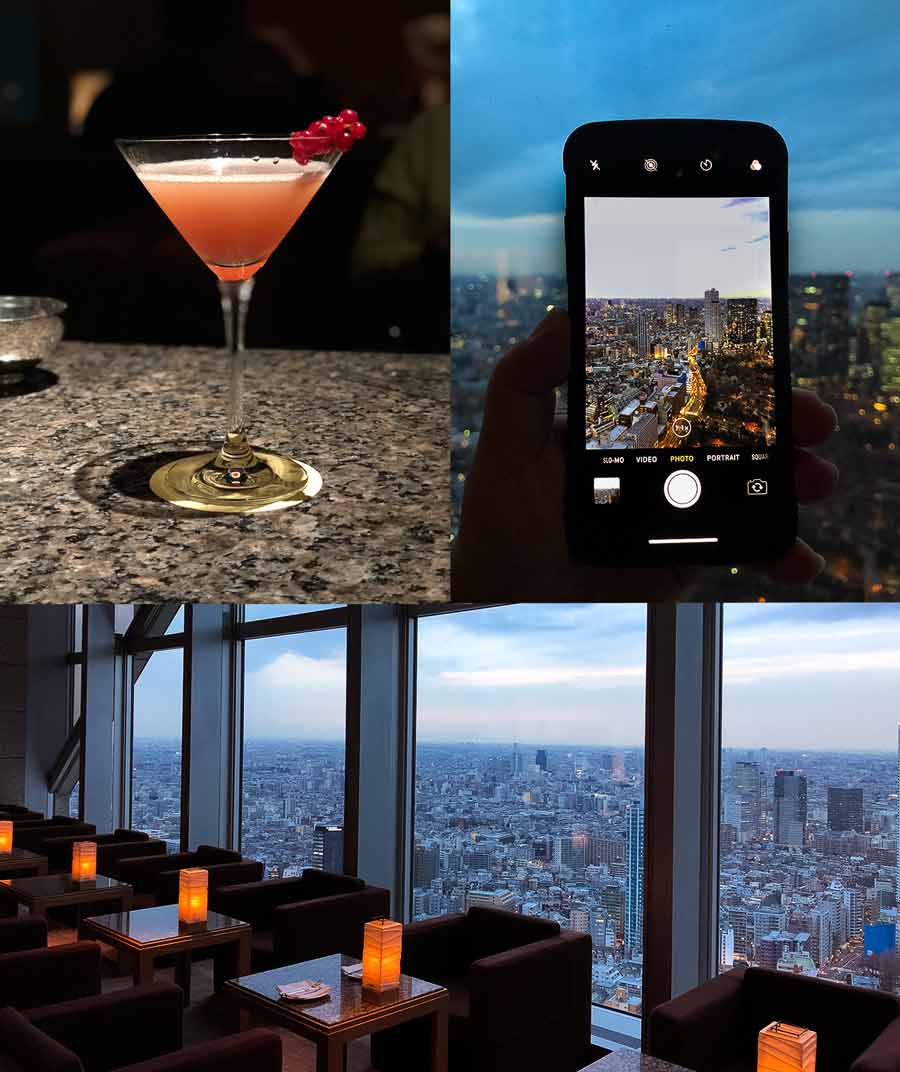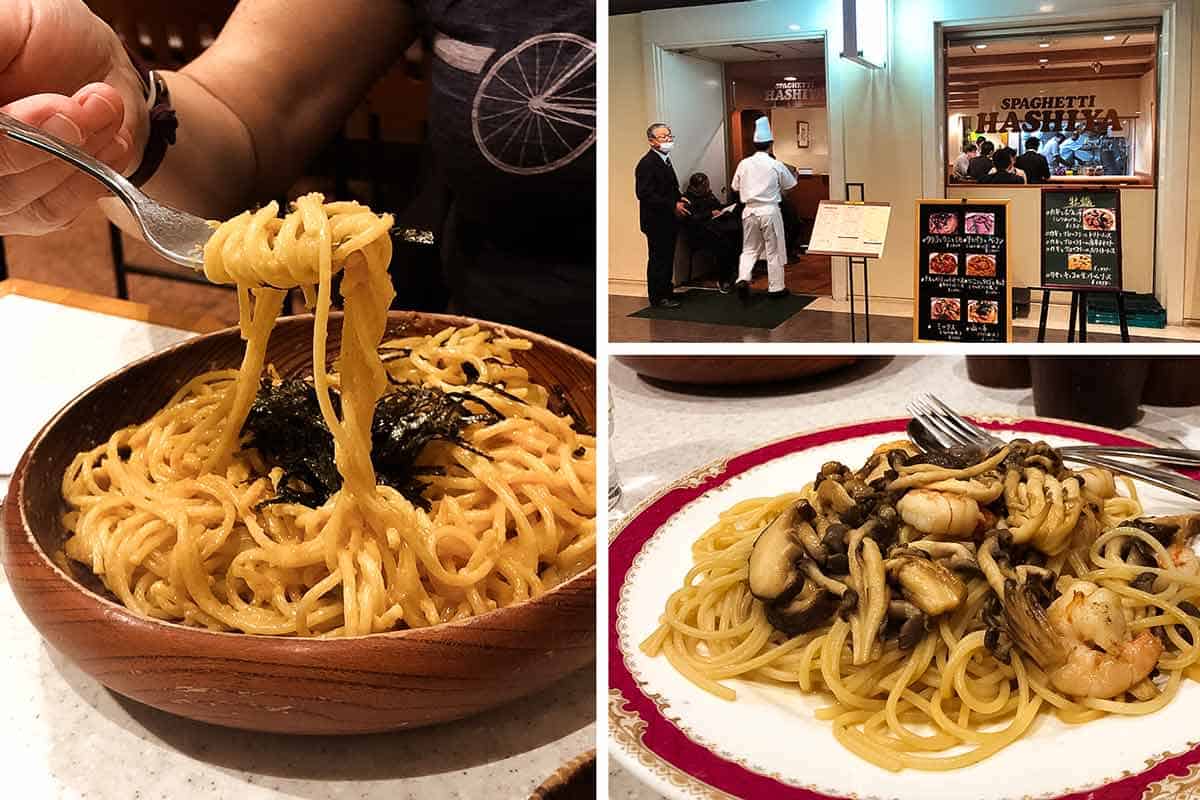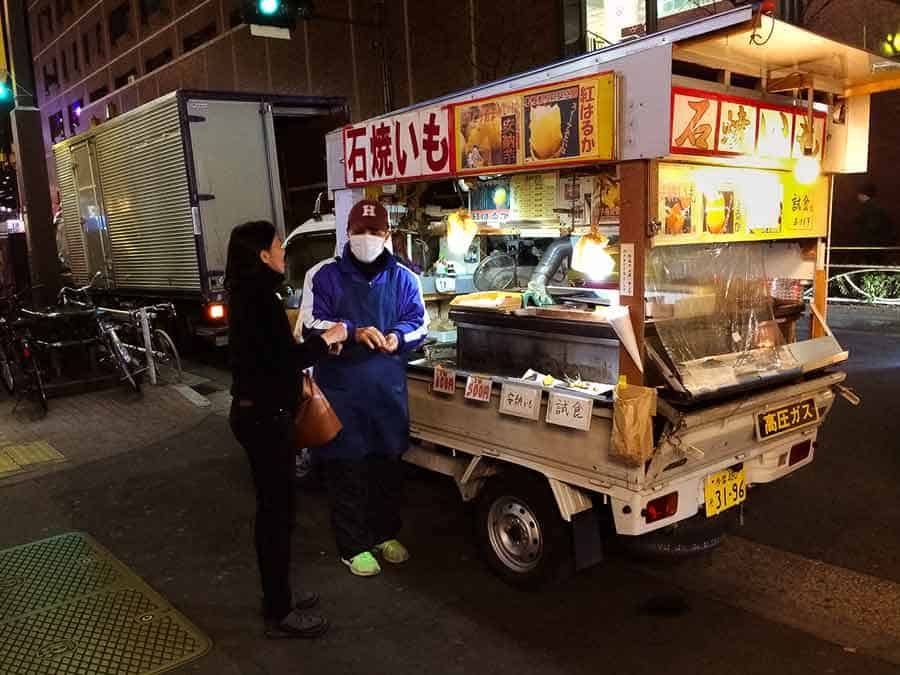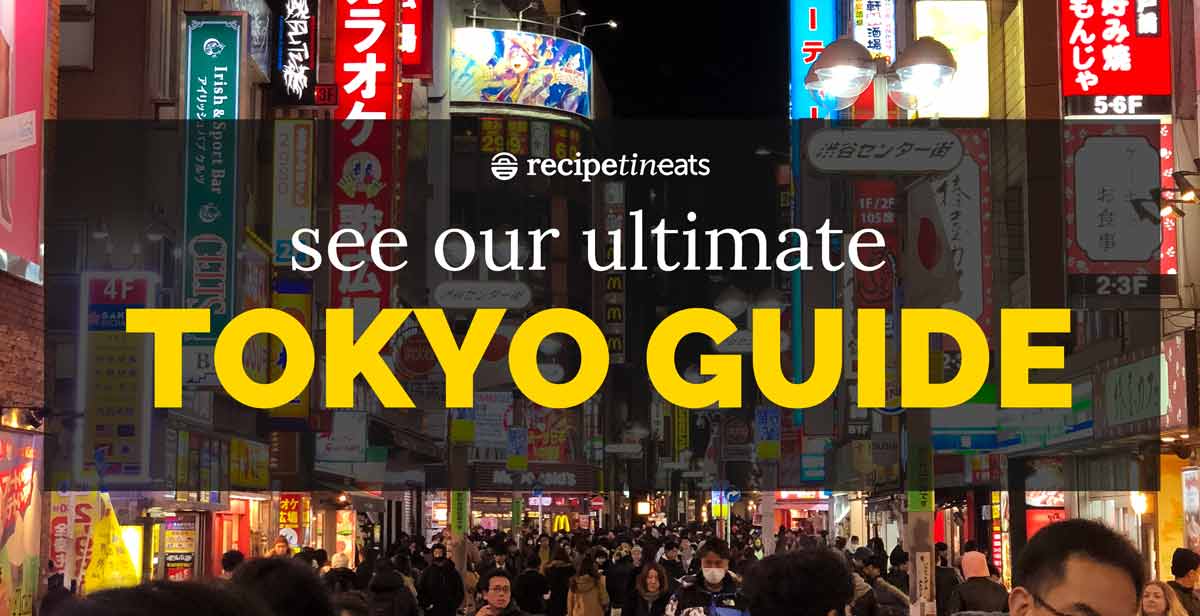Shinjuku is known as the area of Tokyo that has everything, and masses of it! You could spend a month in Shinjuku and still feel like a newcomer to the area. With endless shopping, dining, drinking, entertainment and blocks of towering office skyscrapers, it’s a vast and busy area with mazes of streets that light up in rainbows of coloured signs at night! It’s like a mini Tokyo in itself! We love to stay in Shinjuku sometimes for this reason. You could spend a month or even a year here and barely scratch the surface! Top tip: come here at night during the week to see rowdy Japanese business men bonding over beers in yakitori alley!
Shinjuku Station
Shinjuku Area Map
The majority of the entertainment and shopping areas in Shinjuku are to the north and east sides of the station, between the station and Seibu Shinjuku and Shinjuku San-chome, respectively. To the north east is Kabukicho, the red light district, and the lively area housing a huge number of tiny bars and eateries called Golden Gai. The area west of the station mainly is the business district, mostly consisting of office skyscrapers and large hotels. Shinjuku Gyoen (Shinjuku Park), a large park especially popular during cherry blossom season, is to the south east. Shinjuku is huge and can be overwhelming to explore for first timers. It can be well over a kilometre between points of interest on either side of the station. With traffic light waits, navigating the station and the maze of streets such a walk could easily add up to a half an hour. So plan your itinerary accordingly and pay attention to using the correct exits at the station.
What to do in Shinjuku
Kabukicho
Kabukicho is Tokyo’s sleazy side. Here you’ll find a mix of massage parlours, love hotels, as well your standard adult entertainment establishments. For a red light district however Kabukicho is still very safe, even at night. You may encounter the occasional tout or dodgy-looking character, but as long as you use your common sense there is nothing to worry about. Speaking of earthly desires, as well as coming for a bit of a sticky-beak, there are in fact many good casual dining spots in Kabukicho and this is a perfectly good reason to come for a stroll in the area. It’s very quiet during the day however and only properly comes alive at night.
Golden Gai
How many bars can you fit within a small 80 x 50 meter / 66 x 87 yards area? Almost 200 according to one source if you are talking about Golden Gai, in Shinjuku’s Kabukicho nightlife district. This tiny area comprised of six alleys is crammed with miniature bars side-by-side. Most no bigger than a toolshed, in what surely must be the highest concentration of bars per square metre on the planet. During the day, Golden Gai is pretty dead save for the odd eating establishment like Nagi Ramen (see Food & Drink below). Night time is when Golden Gai properly swings into gear. See the “Best Food” section below for more on drinking in Golden Gai. There are more than 20,000 trees in the park, as well as a greenhouse at the eastern end housing temperate-climate flora. Three distinct garden styles are incorporated into the park: English, French and Traditional Japanese. Each can be found showcased at separate areas of the park. With 1,500 cherry blossom trees – some impressively large – Shinjuku Gyoen is one of the prime places for people to come and enjoy cherry-blossoms during the season. Crowds descend on the park to marvel, photograph and picnic under the trees.
Tokyo Metropolitan Government Building Observation Deck
Architecture geeks will probably be dazzled by the two towers that comprise the Tokyo Metropolitan Government Offices. For the average visitor though, the main reason to visit is for panoramic views of the city skyline from the observatories of the two buildings. Even better, admission is completely free. Building 1 is considered to have the more interesting views, so head to he 45th floor.
Best food in Shinjuku
Aside from great shopping, excellent drinking and dining is the big draw and you’re spoilt for choice for food in Shinjuku! Here are our picks for the best Shinjuku restaurants that we love.
KAISEKI
On the 19th floor of the non-descript Hotel Century Southern Tower (within the Shinjuku Southern Terrace) is Horikawa restaurant. Our mother and her local friends are regulars who meet here for kaiseki (traditional Japanese multi-course dining) every time she visits Japan. The exquisitely presented courses in kaiseki consist of a variety of raw, fried, simmered, grilled, and steamed dishes, and dishes change with the seasons – essential features of true kaiseki cuisine. Kaiseki is a must-try for all Japanese food lovers and Horikawa is an excellent, not to mention reasonably priced, choice to sample this luxurious branch of Japanese cuisine. The stellar view over Shinjuku below you doesn’t hurt one bit either. Horikawa Address: 19F Odakyu Hotel Century Southern Tower, 2 Chome-2-1 Yoyogi, Shibuya-ku, Tokyo (Map) Phone: +81 3 3320 6552 Open: Mon-Fri lunch 11:30-15:30 (LO 14:30), Mon-Fri dinner 17:00-22:30 (LO 21:30), Sat/Sun/PH 11:00-22:30 (LO 21:30) Website|Tabelog page
SUSHI
A new find for us prompted by a review we stumbled across, Kyubey in the Keio Plaza Hotel serves outstanding sushi at moderate prices. There is an English menu from which we recommend you choose one of the assorted sushi courses (we had the nine-piece Sino course, which didn’t sound like alot but was surprisingly filling once the rather large maki-zushi is thrown in). The friendly chefs will prepare a delectable selection of sushi formed with perfect rice. On our visit we sampled some of the best chu-toro (medium fatty tuna belly) we’ve ever had, deliciously sweet uni (sea urchin roe) from Aomori prefecture, and spanking fresh anago (sea eel) offered two ways with different seasonings. Kyubey Address: 2 Chome-2-1 Nishishinjuku Shinjuku-ku, Tokyo (Map) Phone: +81 3 3344 0315 Open: lunch 11:30-14:30 (LO 14:00), dinner 17:00-22:00 (LO 21:30) daily Tabelog page
YAKINIKU
You’re in the mood for yakiniku (Japanese meat barbecue). Maybe though you’re on a tight budget (yakiniku can be pricey). Or maybe you want a way to try as many different meat cuts as possible before you tap out. Or maybe you’re not quite hungry enough to commit to the full yakiniku restaurant experience. Jiromaru is the place for you. At this tiny, casual yakiniku “standing restaurant” (literally, there are no seats and you eat standing), you can order single slices of wagyu beef cuts and other meats to barbecue yourself on your own mini grill set in front of you. The menu is only in Japanese, but if you are positioned in front of the meat display, you could always point and hold up fingers to specify how many slices, saying, “onegai-shimasu” (“please”). This restaurant is also a perfect choice for solo travellers. Jiromaru Address: 1 Chome-26-3 Kabukicho, Shinjuku-ku, Tokyo (Map). Also at Akihabara, Shibuya, etc. Phone: +81 3 6380 3292 Open: 11:00-5:00 daily Website (Japanese)|Tabelog page
TEMPURA
Local tempura stalwart Tsunahachi is a very popular restaurant patronised as much by locals as it is by tourists (it’s in all the guidebooks). The tempura courses here are tasty, accessibly priced, and caters well for tourists with English-speaking staff and menus provided. Truth be told, we found the dinner service a little rushed and perfunctory on our last visit but the tempura was excellent and we can see why this place remains a popular spot. Tsunahachi Address: 3 Chome-31-8 Shinjuku, Shinjuku-ku, Tokyo (Map). Also at Ginza, Ikebukuro, Marunouchi, etc. Phone: +81 3 3352 1012 Open: 11:00-22:30 (LO 22:00) daily except end of year to new year holidays Website|Tabelog page
YAKITORI and IZAKAYA
Omoide-yokocho (“memory lane”), charmingly also called Shonben-yokocho (“piss alley”), is a narrow alley near the railway lines that houses dozens of tiny, shabby-looking eateries. Finding it isn’t hard. Just follow the smoky scent of barbecuing meat wafting from the little shops within that sometimes are only big enough to seat a handful of diners. This is where salarymen come after work to unwind with colleagues with a few skewers of yakitori (grilled chicken skewers), a bowl of miso-flavoured offal stew or maybe some soba (buckwheat noodles), chased down with some cheap grog. We adore the casual food and old-school atmosphere, and have great memories of boozy nights here scoffing tasty things on skewers. English menus may or may not be available, so be prepared to suss out places that do, or else deploy the old point-at-that-guy’s-food method. Omoide-yokocho Address: 1 Chome-2 Nishishinjuku, Shinjuku-ku, Tokyo (Map) Website
RAMEN
For a ramen quite unlike any you’ve tasted before, try Nagi Ramen in Golden Gai. Nagi Ramen are famous for their niboshi ramen, a ramen whose soup recipe includes dried sardines (niboshi) boiled for many hours. The result is a fishy, powerful broth that’s faintly bitter in a pleasant way, and supercharged with umami. The Special Ramen is their signature, and comes topped with soft-boiled egg, roast pork, and sheets of nori. Buy your order ticket at the vending machine at the top of the stairs. English menus are available to help you. Nagi Ramen Address: 1 Chome-1-10 Kabukichō, Shinjuku-ku, Tokyo (2F G2 Alley, Golden Gai, Map). Also at Gotanda, Ikebukuro, Shibuya, etc. Phone: +81 3 3205 1925 Open: 24 x 7 Website|Tabelog page
BARS
Just six alleys house an incredible number of tiny bars in the area known as Golden Gai, with most bars seating just a handful of people. Each bar has its own unique fit-out, atmosphere and character. A number of them are also unfortunately rather exclusive, serving only Japanese customers or regulars. Look for bars that have menus or welcome signs posted outside in English, as these will be the ones most accommodating to tourists. Or, just poke your head and have a nose of the vibe. You’ll know soon enough if the place is somewhere you want to settle in for drink. Note some bars have a cover charge, but you’ll find drink prices are fair to make up for it. Golden Gai (Map) Website (Japanese only)
SAKE
Moto is a small, intimate standing sake (rice wine) bar we tried on our last visit out to Shinjuku. The menus are in Japanese but staff are very friendly and speak a little English – enough to make some recommendations. Both sake nerds in search of a unique rice wine tipple and the average visitor wanting an authentic sake tasting experience will both find Moto a little joint that fits the bill nicely. Moto Address: B1F Hakuho Bldg., 5 Chome-17-11 Shinjuku, Shinjuku-ku, Tokyo (Map) Phone: +81 3 6457 3288 (no reservations) Open: Mon-Fri 15:00-23:00 (LO food 22:00, drinks 22:30), Sat/Sun/PH 12:00-21:00 (LO food 20:00, drinks 20:30) Website (Japanese only)|Tabelog page
BAR
A bar in the five star Park Hyatt Hotel, with its floor to ceiling windows offering sweeping views of the Tokyo skyline, is never going to be a cheap place to drink. But it’s worth every penny if not for the brilliant outlook over the city, made twice as magical if you come at sunset. The classy New York Bar on the 52nd floor is of course famous for featuring in the film, Lost In Translation. For a more relaxed experience, head down a few floors to the Peak Lounge which is roomier, has comfortable lounge seating and the same view. The drinks menu however is more limited. New York Bar Address: 52F Park Hyatt Tokyo, 3 Chome-7-1-2 Nishishinjuku, Shinjuku-ku, Tokyo (Map) Phone: +81 3 5323 3458 (no reservations) Open: Sun-Wed 17:00-24:00, Thu-Sat 17:00-1:00 Website|Tabelog page
YOSHOKU (PASTA)
Yoshoku is the name given to Western foods that have been uniquely adapted to Japanese tastes through the use of Japanese ingredients and techniques. Yoshoku is a “thing” in Japan – and we love it!! Spaghetti Hashiya is a yoshoku restaurant that’s been serving nothing but spaghetti since the 1950s. Here you can try spaghetti dishes featuring ingredients and pasta sauces unlike what you’ve ever tried before. Shimeji mushrooms in soy sauce and butter sauce. Sea urchin in a creamy cod roe sauce. Tiny asari clams in a ginger-based sauce. These are just some of the inventive but delicious combinations on offer at Hashiya. Spaghetti Hashiya Address: B2F Shinjuku Murano Bldg., 1 Chome-26-2 Nishishinjuku, Shinjuku-ku, Tokyo (Map) Phone: +81 3 3346 2371 Open: Mon-Fri 11:00-21:00, Sat 11:00-14:00 (LO 13:20), PH 11:00-20:30, Sun closed Website (Japanese only)|Tabelog page
SWEET POTATO TRUCKS
Hailing from days of old, sweet potato trucks are one of the original street food trucks of Japan before food trucks were ever cool anywhere. These lonely little vehicles can still be seen trundling slowly through neighbourhoods moaning, “Ooooiiiiiiiiiimmmmoooooooooo” (“Potaaaaaatoooooooo”) in a low, brooding voice over a loudspeaker. The first time we heard the sound we thought these trucks were announcing that someone important had died. Luckily it turns out they are announcing a happier turn of events: the arrival of delicious stone-roasted sweet potatoes. Hot and smoky from cooking in their skins over hot stones, the flesh is as sweet as candy and especially tasty on a cold night. If you happen across one of these trucks from a bygone era, be sure to try one.
How to get to Shinjuku
You can get to Shinjuku station on either of the following.
JR Chuo Line (rapid) JR Sobu Line JR Yamanote Line Tokyo Metro Marunouchi Line
Read the Tokyo Trains section in the Tokyo Travel Guide for information on travelling on trains, and how to figure out which trains to catch where!
How to use this map
By restaurant name – Click the icon on the top left to reveal our list of recommended restaurants in this area (see above for more information on each restaurant). Then click on the restaurant for more information about that restaurant as well as highlighting the marker on the map. Zoom in and out by clicking the + and – on the bottom left. Large view – Click the icon on the top right to open a new tab to view the map in full screen. Click a marker on the map to reveal more information about the restaurant.
See our Tokyo Guide!
Born in Japan, raised in Australia, Sydney is our hometown, but Tokyo is our playground. This Tokyo Travel Guide is a culmination of a lifetime of travelling to Tokyo, condensed into one place!!
Asakusa / Shinjuku / Shibuya / Harajuku / Tokyo Station / Imperial Palace / Ginza / Ueno / Akihabara
